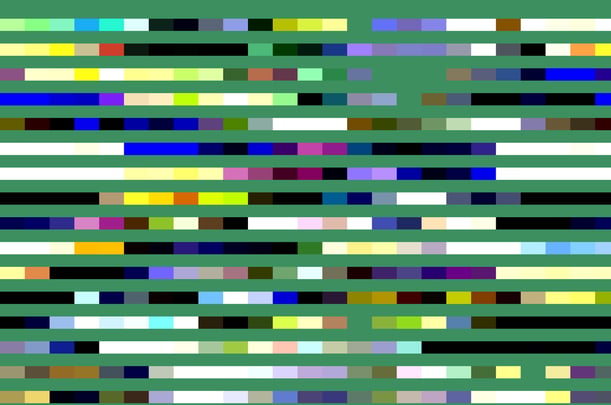In the current ocean of high-throughput sequencing techniques, it can be overwhelming to understand how a particular technology works, what it excels at, and what it struggles to achieve.
In this mini-series, we guide you through a technique called RNA-mediated oligonucleotide Annealing, Selection, and Ligation with next-generation sequencing (RASL-seq) to help you evaluate if it is suitable for your next drug discovery and development pipeline or if other sequencing technologies may be more suitable.
The first article in this series will give you an overview of RASL-seq, a brief introduction to how it works, and its potential in drug discovery.
RASL-seq: Developed for drug discovery
Biotechnology and pharmaceutical companies need scalable, cost-effective technologies to determine the effects of thousands of potential therapeutics on gene expression and to discover novel targets and off-target effects. Choosing the most suitable technology for the job is paramount to quickly achieving outcomes while saving time and money (Pruteanu and Bender, 2023).
Current bulk RNA-seq library preparation approaches, such as Illumina TruSeq, are expensive and struggle to upscale to the sample volumes required in drug discovery.
To address these scalability and cost issues directly, researchers at the University of California, San Diego, developed RASL-seq (Li et al., 2012; Li, Qiu and Fu, 2012).
Thanks to the development of RASL-seq, researchers can investigate up to 1,536 samples (four 386 well plates) in the same sequencing run allowing them to treat multiple cell lines with hundreds of compounds at various concentrations and time points.
This generates broader, cost-effective insights into how a given potential therapeutic affects particular genes, biological pathways, regulatory gene networks, or alternative splicing.
So, let’s take a look at how RASL-seq works. You can find more details about the protocol behind RASL-seq in our accompanying blog post.
RASL-seq: A targeted approach to mRNA sequencing and detection of alternative splicing
RASL-seq uses sample barcoding to allow extensive multiplexing. Instead of genome-wide read-outs, it generates expression information for only a select panel of up to 500 genes but excels at detecting over 5,000 known alternative splicing events.
RASL-seq in a nutshell
- Specific barcoded probe pairs target splice junctions at the 3’ end of the mRNA of a gene of interest. One probe resides on one exon, while the other probe resides on the adjacent exon.
- Barcoded mRNA is then separated from total RNA with poly(A)-selection.
- Treatment of enriched mRNA with ligase joins the pairs of probes only when the exon-exon junction is present and undergoes PCR amplification.
- The prepared probes are sequenced and their presence or absence in sequencing results gives sensitive read-outs on the expression of different mRNA isoforms while allowing accurate detection of alternative splicing events.
The promise and limitations of RASL-seq in drug discovery
What makes RASL-seq stand out are its scalability and its accuracy to detect alternative splicing events.
Changes in alternative splicing are associated with cancer progression and resistance to anti-cancer drugs, so accurate large-scale detection and comparison of these events with RASL-seq could have profound implications for drug development pipelines and the clinic (Sciarrillo et al., 2020).
For example, the inventors of RASL-seq showed the promise of RASL-seq with a screen of around 4,000 potentially therapeutic compounds in prostate cancer cells. They identified one compound which suppressed the expression of key genes to stop prostate cancer cells from proliferating, even when resistant to other types of common prostate cancer therapies (Li et al., 2012).
But, RASL-seq has its limitations.
The primary limitation of RASL-seq is the lack of transcriptome-wide coverage with direct measurement of only around 500 genes at a time.
More recent technologies overcome this challenge. Advances in bulk 3’ mRNA-seq approaches such as MERCURIUS™ DRUG-seq now provide expression read-outs for around 20,000 genes in thousands of samples, combining the cost-efficiency and scalability of RASL-seq with comprehensive genome coverage, starting directly from cell and organoids lysates.
However, if you are interested in the detection of alternative splicing, RASL-seq is the better option as MERCURIUS™ DRUG-seq cannot accurately provide this information.
But, for genome-wide expression information, MERCURIUS™ DRUG-seq may be the right choice to help you quickly achieve your drug discovery outcomes without breaking the bank.
Contact us to find out more about how you could use RASL-seq or MERCURIUS™ DRUG-seq to accelerate your next drug discovery pipeline.
References
-
Li, H. et al. (2012) ‘Versatile pathway-centric approach based on high-throughput sequencing to anticancer drug discovery’, Proceedings of the National Academy of Sciences, 109(12), pp. 4609–4614. Available at: https://doi.org/10.1073/pnas.1200305109.
-
Li, H., Qiu, J. and Fu, X.D. (2012) ‘RASL‐seq for massively parallel and quantitative analysis of gene expression’. Current protocols in molecular biology, 98(1), pp.4-13. Available at: https://doi.org/10.1002/0471142727.mb0413s98.
-
Pruteanu, L.L. and Bender, A. (2023) ‘Using Transcriptomics and Cell Morphology Data in Drug Discovery: The Long Road to Practice’, ACS Medicinal Chemistry Letters, 14(4), pp.386-395. Available at: https://doi.org/10.1021/acsmedchemlett.3c00015.
-
Sciarrillo, R. et al. (2020) ‘The role of alternative splicing in cancer: From oncogenesis to drug resistance’. Drug Resistance Updates, 53, p.100728. Available at: https://doi.org/10.1016/j.drup.2020.100728.




